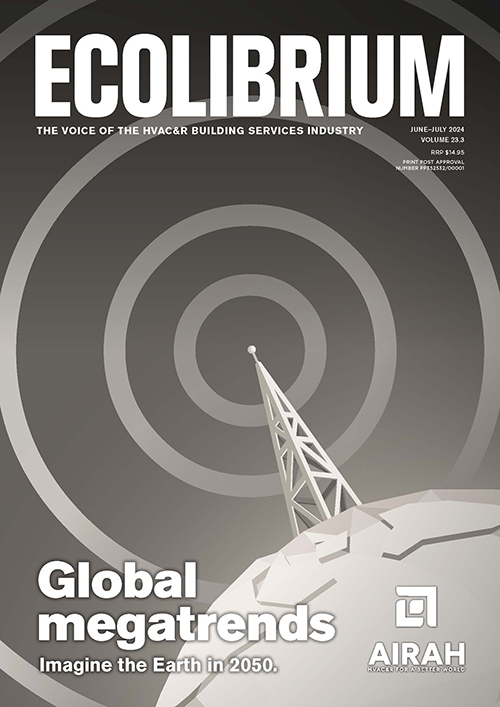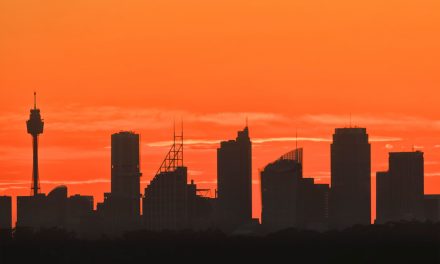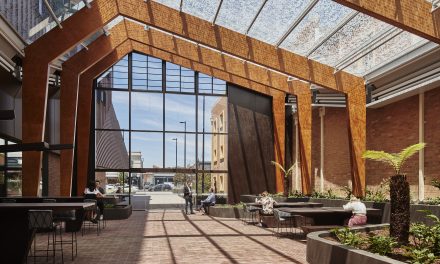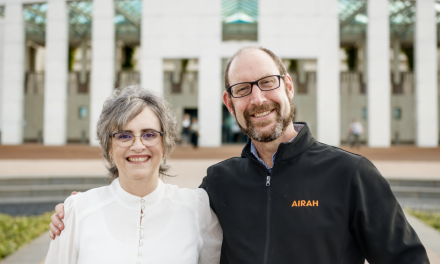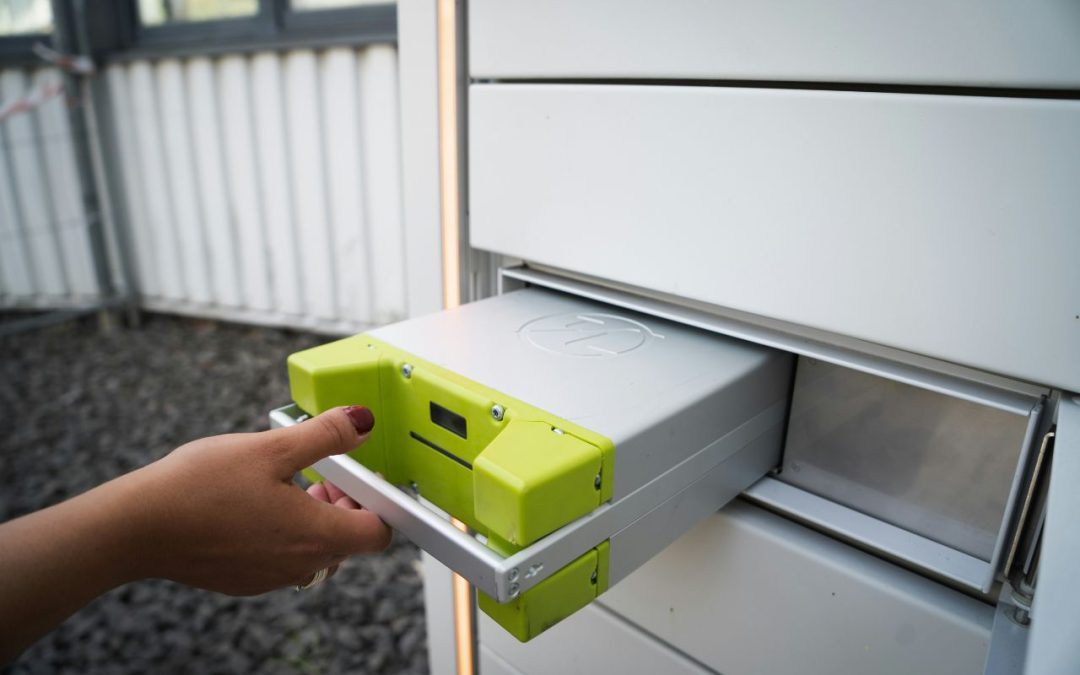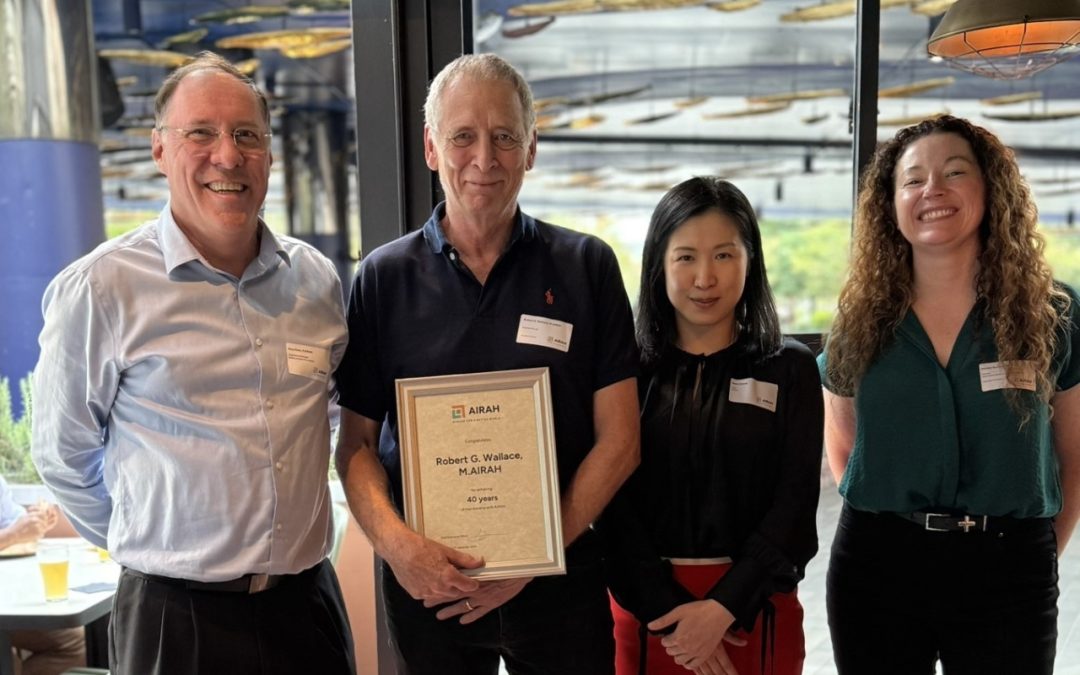What are the big, overarching global influences – megatrends if you will – that we are likely to see in the built environment, and particular in HVAC&R, in the lead-up to 2050? Ecolibrium editor Matt Dillon seeks an answer.
Most of us are no doubt familiar with the prefix “mega” being added to words, the application of these giant-making two syllables converting regular-sized things into monsters, behemoths, titans and epics.
I can think of Megadeth, the totally huge and bodacious thrash metal band; Megatron and Megamind, both animated arch-villains; a megachurch, the kind built like a stadium and often led by a charismatic televangelist; and a megamart, which to my mind is like a supermarket but with more big-box retailers.
The Tattslotto Megadraw may just be the titanic windfall that could change your life forever, making you, of course, mega-rich.
Megafauna, megabyte, megacity – all enormous, imposing and capacious – are other mega-things that come to mind.
In a similar vein, megatrends are defined as trends that have an effect on a global scale. These are big, important movements.
A megatrend can be defined as “a widespread and long-term social, economic, environmental, political or technological change that is slow to form but has a major impact once in place”.
It can cover political, economic, natural environmental, social, and cultural dimensions.
In its most recent once-in-a-decade report on global megatrends, CSIRO identified seven such trends to keep an eye on: Adapting to climate change; Leaner, cleaner and greener; the Escalating health imperative; Geopolitical shifts; Diving into digital; Increasingly autonomous; and Unlocking the human dimension.
“Australia is at a pivotal point,” says CSIRO CEO Dr Larry Marshall. “There is a tidal wave of disruption on the way, and it’s critical we take steps now to get ahead of it.
“From resource scarcity to drug-resistant superbugs, disrupted global trade, and an increasingly unstable climate threatening our health and way of life – these are just some of the challenges we face.
“But these challenges also tell us where the most powerful innovation can be found, when we see a different future, and leverage science to create it.”
In the quest to nail down the abstract term – to draw an outline when what we have only fuzzy uncertainty – we sought clarity from some future-thinking individuals.

Abraham Corona, M.AIRAH, incoming AIRAH Industry Impact Manager
Sustainability and resilience
“Picture this: as an HVAC&R engineer, I find myself at the intersection of two compelling narratives that shape the world around us: sustainability and resilience in the built environment – megatrend one,” Corona says.
“Imagine walking through the bustling streets of a city, where every building stands as a testament to our commitment to a friendlier universe. It’s no longer just about constructing structures; it’s about weaving sustainability into the very fabric of our cities. Gone are the days of mindless consumption and environmental neglect. Now, every decision, every design, is guided by a reverence for our planet and a desire to leave a positive mark on it.”
Towards net-zero
“Working in the Australian HVAC industry for the last 15 years has allowed me to witness firsthand the shift towards net-zero – megatrend two. It’s not just about reducing our carbon footprint; it’s about creating buildings that give back more than they take. Imagine skyscrapers adorned with solar panels, harvesting energy from the sun to power themselves and more. It’s a dance with nature, where every step forward is a step towards a greener, cleaner future.”
Adaptive design
“But sustainability alone isn’t enough. In a world where climate change endures, resilience is key. We have seen the devastating effects of extreme weather events and natural disasters, and we know that our buildings must be able to weather the storm, quite literally. That’s where adaptive design –megatrend three – comes in, ensuring that our structures can bend without breaking, and bounce back stronger after every setback.
The Earth in 2050
“Now, let’s fast forward to 2050. What does the Earth look like? What are our cities like?
In my vision of the future, the Earth breathes a sigh of relief. Our cities are vibrant, thriving hubs of innovation and sustainability. From the towering skyscrapers to the old-fashioned neighbourhood cafes, every corner of our urban landscapes is infused with greenery and life. We have learned to live in harmony with nature, harnessing its power while respecting its limits.
Technological marvels like 3D printing have revolutionised the construction industry, allowing us to build with unprecedented speed and precision. But more than that, they have opened up a world of possibilities for creativity and design. Imagine reducing construction time by receiving onsite prefabricated modules – modules that were previously not feasible – all brought to life through the magic of 3D printing.
“But perhaps the most inspiring aspect of this future is the sense of community that infuses every aspect of city life. In a world where sustainability is the norm, we have learned to come together, to support one another, and to build a future that works for everyone.”
HVAC&R engineer and a citizen of this world
“So yes, there are challenges ahead,” Corona says. “But as an HVAC&R engineer and a citizen of this world, I choose to believe in a future where sustainability, resilience, and community are not just catchwords, but guiding principles that shape every decision we make. Together, we can create a world where the skies are clearer, the air is cleaner, and the future is brighter for generations to come.”

Jessica Allen, M.AIRAH, Technical Manager, Climasure
Three trends to watch
“From my little corner of the industry, three trends I see emerging are as follows,” says Allen.
“One, whether out of a desire within the industry to improve or driven by regulation, I believe a huge increase will occur on the focus on air tightness as a priority in the build environment. It’s such an easy grab in terms of upgrades and improvements to thermal comfort and building health, and testing is an easy skill to learn, so we can upskill the industry fairly easily. The more testers that enter the market, the cheaper the gear will become to purchase, too – it’s currently quite pricey even for a single fan kit. This will take off once education spreads.
“Two is that more people will be asking more questions of their builders and architects. Home-owners want to be more informed on what they are paying for, and the energy efficiency space is like a ball of wool that unravels itself before your eyes – one question turns into two, turns into four, turns into eight, and so on.
“My third trend to watch is the electrification of buildings and maybe even some more Passivhaus hotels, hospitals and schools in Australia!”
The changing built environment
“Hopefully we manage to avoid mould and condensation problems that higher energy efficiency can inadvertently cause,” Allen says, “and as a result of the work being done, our buildings will become cleaner and healthier to live in.”
Our cities in 2050
“WIFI connectivity controls most things, buildings are bigger and newer as the older buildings are demolished,” Allen says. “Hopefully our overall energy use is reducing, and the type of energy used has moved away from non-renewable sources.”
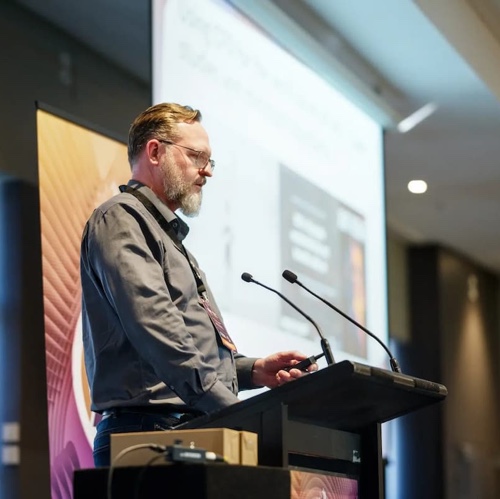
Ken Thomson, F.AIRAH, Senior HVAC Engineer, Fusion Modulair
Labour reduction
A trend Ken Thomson can see emerging in the built environment, architecture and construction in the coming years is a reduction in the amount of labour needed in construction.
“To be able to improve efficiencies in construction,” Thomson says, “we must move towards similar approaches as used in the car market: modularity, automation and the use of AI and robotic/drone inspection to help do design, certification and site inspections for improved quality and speed.
“For the construction industry to remain productive, and become efficient and cost-effective, the amount of labour needed must reduce,” Thomson says.
“The cost of labour in Australia is the significant driver in the cost-of-living pressures, because in all areas of the supply chain the cost of building in Australia is high and continuing to increase. The effects are felt on all products.
“With the cost of labour accounting for around 50 per cent of most construction projects, skills shortages will continue to cause headaches. Fixing this it is not a matter of increasing the amount of unskilled and skilled workers in the workforce, it must be addressed by reducing the need for labour altogether. Increasing the workforce population just increases the pressures in the construction industry, resulting in an increase in costs, and labour rates.
“Slattery expects costs escalation to run at an average of 6–7 per cent per annum over the course of 2024.
“This level of cost increase is not sustainable, and the impact on the overall market is a reduction in investment in Australia, due to increasing costs of doing business. For any business to operate they need facilities, and the costs of building are rapidly getting to a stage where other options will have to be considered. Something must give.
“The skill level of workers onsite must increase – skills in using automation, drones, AI, cameras, computer-aided design, and other technologies must make their way onto the construction site, and replace some of the manual tasks.
“Set-out for plaster in-wall framing should not be done manually via a tape measure and chalk, it must be done by a robot and laser marking, using the 3D model. The same works for ductwork set-out, and locating supply grilles, return air grilles, etc.
“Improvements in the location of the air diffusion in a space results in better thermal comfort and also reduced energy consumption,” he says. “Defining the locations using AI, and then transfer of that information to site via drones and laser measuring is a key aspect and skill that needs to be developed.”
Changes coming
“Buildings must become more sustainable, building sizes, locations, design components must be more responsive to the climate and more resilient,” Thomson says. “Redefining the education process in design, using AI and appropriate technology, is critical in the design approach for a building to be more sustainable.
“Buildings need to be communities, not isolated spaces, with single uses and users. As climate change takes effect, protection from the elements will become more and more important, and impacts on food supply and demand will drive towards better integrated systems.
“Using air twice or three times over in a building needs to be considered. By this I mean air must have multiple purposes, and one HVAC&R system must be able to provide for all these purposes. As an example, as air and even water into an office are then exhausted or discharged, it should be used for, say, a vertical farm, then used again as air into an industrial process before it is removed from the building.
“The Line in Saudi Arabia is an example of a project where these processes and uses must be addressed in the design to ensure effective and efficient use of resources. Natural processes need to be used instead of mechanical. Understanding the basics of physics, physical properties and materials is needed, to make sure we use things more appropriately.”
The Earth in 25 years
Have a look at Saudi Arabia for some inspiration here. These types of projects and other ideas being built, developed and imaged by the Saudi government are ideas that encompass what the future must start to look like.
“There are two ways to go: with the flow, or against the flow – where we completely fail to address any of the current issues,” Thomson says.
“In the first scenario, Earth cost dominates, not financial measures. The costs of doing things are measured by impact on the Earth, and this is the measure used for determining value. Buildings therefore become part of the ecology and not a blight on the Earth, built by scarring the Earth.
“Buildings become a place where integrating natural and artificial becomes a blur, HVAC&R which is already almost invisible, becomes like magic – something that is there to help manage conditions within a building, but is delivered in a way that it is almost imperceptible from a natural process.
“Or we live in a highly mechanised society, constantly fighting with external conditions, using significant amounts of resources and energy to maintain liveable conditions on the planet, while only barely being able to manage the robust simple machines we currently have.
“We keep everything operating by force and significant energy use, we feed ourselves via mechanised processing of food sources, and have a financial-wealth-based society where only the mega-rich get to experience nature as it once was in a highly controlled environment.
“We continue to use resources at a rapid rate and end up in a situation where scarcity and waste generate significant gaps between the haves and have nots.”
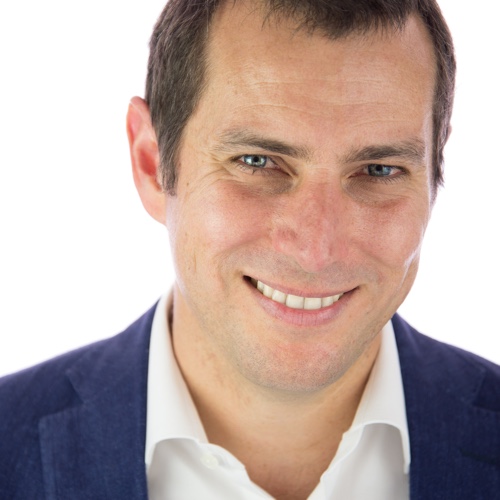
Yale Carden, M.AIRAH, GeoExchange Australia
The polycrisis
“Any trends that will emerge in the built environment, architecture and construction in the coming years will be in reaction to the various environmental and social crises, often referred to as the polycrisis,” Carden explains.
“It’s a really big question, so I have adopted the VUCA framework in my response. VUCA stands for volatility, uncertainty, complexity and ambiguity, and can be described as the constant and unpredictable change that is now effectively the norm.
“VUCA has been adopted not as a free pass for inevitably predicting some or all trends incorrectly but rather to assist to understand the various possible futures in which we are moving towards and the importance of a framework that embraces this myriad of possibilities.
“Further, to recognise competing approaches to developing solutions within these megatrends, a quick introduction to the concepts of degrowth and techno-optimism, both very topical in various online and academic forums.
“Degrowth is defined by Jason Hickel, one of its main advocates as ‘a planned reduction of energy and resource use designed to bring the economy back into balance with the living world in a way that reduces inequality and improves human wellbeing.’
“In a growth-centric culture this is often a taboo position but one that requires a sensible conversation.
“The second is the technology solutions of the effective accelerationists that see continued growth and technology uptake, artificial general intelligence being the dominant one today, as the only path to solving the polycrisis.
“A VUCA world requires a ‘yes and’ cooperative approach to solutions, not a binary one. As such these two approaches can live side by side and we arguably want them to.
“The timeframe is important here for ‘coming years’ and I will adopt as being up to 2050. In some models, we could be living in a dystopian world by 2050 whereas in others it may not be that different to today. That VUCA thing again, as we wrestle to understand a range of climate and social tipping points.”
Megatrend: Material resources
“Materials technology is arguably one of the greatest growth areas today,” Carden says. “From building materials to fashion to semiconductors to energy storage – electrical and thermal – our use and reuse of material resources has a profound impact on our future.
“With respect to the built environment, the depletion of material resources will see further sophistication and utilisation of embodied carbon and life-cycle assessments. The degrowth option is designing and building smaller homes and effectively repurposing existing buildings while the technology solutions will be in materials recycling and the identification and creation of regenerative materials.
“The use and/or rediscovery of cross-laminated timber (CLT), straw bale, rammed earth and bamboo are the precursors of this trend, and I look forward to seeing what becomes possible with natural construction materials such as mycelium.
“Ironically, it may well be the cooperative approach of technology inputs enabling degrowth solutions. For example, AGI identifying the optimal natural materials and production processes for a low-technology solution.”
Megatrend: Food
“Food systems are both one of the largest contributors, and the most susceptible to the environmental crises,” Carden says. “They’re also pretty important to the whole civilisation thing! The ability to grow food (yields) and to distribute it to the customer (supply chains) are both susceptible and will become increasingly fragile. Think bananas after Cyclone Yasi in 2011 or cocoa and coffee prices in 2024.
“A trend will thus be the localisation and integration of regenerative food-growing and food-storage systems into the built environment. Individual solutions will largely depend on the density of the built environment. Low-technology solutions such as rooftop or balcony gardens to appear in higher density areas and the old-school backyard vegie patch or community gardens, street fruit trees and food forests to appear in medium- to lower-density areas.
“High-tech solutions may include vertical farms, aquaponics, covered cropping and increasingly processed foods such as artificial meats as we aim to secure food supply in a changing and more variable climate.”
Megatrend: Energy
“Electrification and decarbonisation require an increase in electricity generation to address that used by EVs and the conversion of gas heating. Further, it needs to be from renewable sources or as Nate Hagens has coined them – rebuildable sources. That is, the wind and solar are renewable but the solar panels, wind turbines, etc., are rebuildable.
“Here, I see a trend towards a thermal-demand-led energy transition. That is, we be as efficient as we can with our thermal demand – the concept of negawatts and that degrowth thing again – which will mean that we need less renewable electricity supply and, perhaps most importantly, less need to upgrade existing transmission systems.
“While the thermal and electricity sectors have largely evolved in parallel, although on different timeframes, the key area of future differentiation is centralisation. The electricity sector will continue to decentralise, rooftop solar being a near-perfect example.
“However, the thermal sector will see more centralisation in the form of district thermal energy systems. The merit of centralising thermal energy systems largely lies with the concepts of thermal sharing and thermal storage in that they assist to conserve thermal energy – for example, all that waste heat via cooling towers – and provide arbitrage against supply cost fluctuations. That is, generate heat or cool when costs are low.
Not what we know it today
“There are a number of climate and social tipping points that could occur between now and 2050 that, if they do, will dramatically change the Earth as we know it,” Carden says. “Topical examples include the melting of the polar ice caps, collapse of the Atlantic Meridional Overturning Circulation (AMOC) and the loss of insect life and much of our food pollination with them.
“In 2023, six of nine of the Earth’s planetary boundaries had been transgressed. Pressure is building on two, and only ozone depletion is improving. A hat tip to the Montreal Protocol and the HVAC sector for proving that positive shifts are possible. There is little indication that we are making significant progress on improving the other eight.
“Thus, even if we avoid the worst of dystopia – Bladerunner 2049? – the Earth in 2050 is not what we know it as today.
“Shifting habitats – for example, the Amazon rainforest becoming savannah grasslands – significantly reduced polar areas, higher sea levels, biodiversity losses and intermittent areas of flooded or burnt- out land will be the aesthetics of how the Earth looks in 2050. The degree of this just depends on which model is correct and which tipping points are reached.
In terms of humans, migration from climate-impacted areas is likely to be significant. This will be within and across international boundaries. A precursor to this is those towns in the NSW northern rivers that are being bought out in government buy-back schemes due to increasing flood events through a combination of poor land use planning, more intense weather events and catchment land- use changes.
“Hence, we are already starting to see human movement away from climate-impacted areas and towards ‘safer’ areas.
“Cities will see the majority of this migration, at least those in suitable locations.”

Patrick Chambers, Affil.AIRAH, Stantec Australian Building Services Discipline Leader
More subtle than macro materiality
“When I think about the momentum of the 20th century megatrends and the legacy they have created, I can’t help but think that the next wave of megatrends will be more subtle than the macro- materiality revolution of 20th century urbanisation,” Chambers says.
“Three key trends that I believe are emerging in the built environment include AI, advanced building services and controls systems, and use of natural materials.
“Artificial intelligence and computational design automation will reduce labour costs associated with producing design and construction documentation,” Chambers continues.
“Advanced building services controls systems mean there will be a more ubiquitous application of sensors and monitoring capability, which will help inform machine-learning-driven controls that will increase the energy efficiency and performance of our buildings.
“And I believe there will be a renaissance in the use of natural materials.”
What will happen next
“AI and comp design will infiltrate many facets of day-to-day tasks and activities,” Chambers predicts. “From automated meeting minutes to semi-automated reporting activities to software-embedded workflows. Everybody with an administrative element of their occupation will experience efficiency gains.
The big question is what will happen next? Will design fees come down, or will it facilitate higher quality documentation within the same budget? Perhaps it will facilitate increased creativity, as people’s minds are relieved of the mundane activities attached with our day-to-day roles.
“There are very interesting debates about whether the industry has holistically become more efficient since the advent of digital documentation versus hand-drawn hard copies, and a similar conversation exists with respect to 3D modelling tools and BIM workflows versus traditional 2D CAD. “Automation can obviously save time, but it can also lead us to reduce our attention to detail. I wouldn’t be surprised if we’re having a similar debate in 20 years about the impact of AI and Comp Design on the efficiency of the design process!”
Chambers predicts buildings will become smarter.
“The exponential growth in the production of sensors I suspect will follow a similar Moore’s Law trajectory as the semiconductor,” he says. “They will become exponentially cheaper, and it will become easier for ubiquitous applications of sensors throughout buildings. This will drive increased monitoring capabilities, which coupled with machine learning and even generative AI-driven controls, I suspect buildings will become much smarter, much more energy efficient, and much more adaptive to our needs.”
Chambers suspects growing environmental consciousness will see materials such as wood, bamboo and other renewable resources used for applications beyond structural purposes, hopefully also encouraging innovation in material technology, such as the development of new composites.
“I would like to think that we should expect a move away from synthetic, petroleum-based materials towards those that have lower carbon footprint, are recyclable, and/or come from responsibly managed sources,” he says. “This emphasis on natural materials will also impact the broader aesthetic trends in our industry.
Dateline 2050
“I’d like to say things will be vastly different, but the construction industry is a slow-moving beast,” Chambers says.
“I’d invite people to research the F16 fighter jet built 50 years ago, and reflect on the military aeronautical industry being perhaps the most innovative and progressive of any.
“The construction industry is not going to revolutionise at a macro level with respect to its materiality and scale. Materials such as concrete (cement), steel (iron ore) and glass (silica) are among the most abundant materials in the Earth’s crust, so our cities will for the most part look very similar. It will be subtleties in automation, controls that will evolve and support an enhanced user experience. So, cities might not look very different at all, but hopefully they are healthier and more comfortable.”
